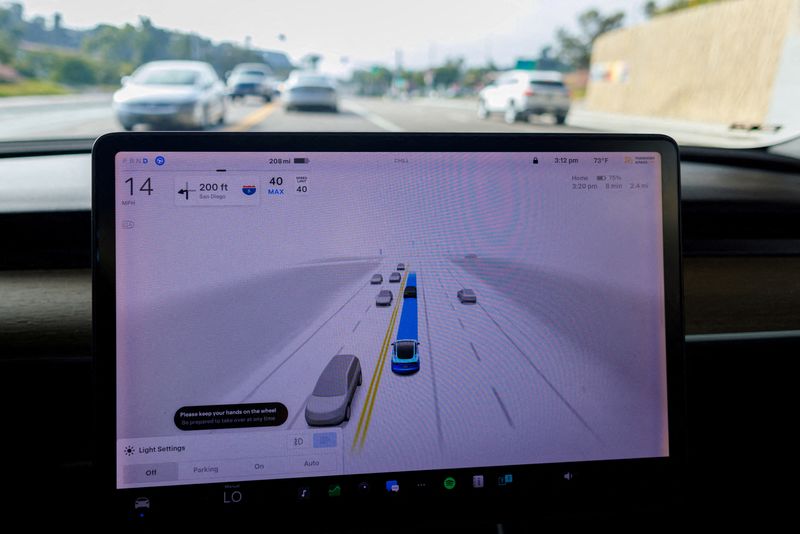Investing.com — Ahead of Tesla’s upcoming Robotaxi Day on Oct. 10, Morgan Stanley analysts outlined five key factors they are focused on from a Waymo, Uber (NYSE:UBER) and LYFT Inc (NASDAQ:LYFT) perspective, both at and after the event.
1) A Trillion-Mile Autonomous Opportunity: The U.S. rideshare market currently captures only about 1% of the total miles driven, with Uber and Lyft (NASDAQ:LYFT) generating roughly $54 billion in gross bookings in 2024. However, the arrival of autonomous vehicles (AVs) could unlock a much larger market, Morgan Stanley analysts note.
A lower-priced autonomous offering could dramatically expand rideshare usage and frequency.
2) Technological Innovation and Acceleration of Autonomous Rollout: A key focus for Robotaxi Day is whether there will be evidence of step-change improvements in AV technology.
Tesla (NASDAQ:TSLA)’s advancements in machine vision, autonomous driving systems, and GPU-enabled training could be pivotal.
Morgan Stanley remains cautious, noting that the road to a fully scaled autonomous offering is still fraught with technological, regulatory, and safety challenges. However, any signs that Tesla is making significant progress in these areas could steepen the adoption curve for AVs over the next 5-10 years.
3) Will a Hybrid Marketplace Still be Needed?: Morgan Stanley analysts said they will be watching to see if Tesla reveals any technological advancements or cost curve improvements that could give it a structural advantage over Waymo, which Waymo may struggle to overcome.
“Whether we feel better or worse about there being multiple players in this autonomous market matters materially to Uber,” analysts noted.
“This is because we think a hybrid marketplace offering (like Uber) with both humans drivers and autonomous players will remain important to enabling the autonomous driving adoption curve.”
4) Tesla’s Potential Cost Advantage: Tesla’s potential to launch a Level 4 (L4) autonomous offering is a key focus, as it could significantly reduce the cost per mile.
Analysts estimate that if Tesla succeeds with its L4 rollout, it could hold a 41% cost advantage over Uber and Lyft, and a 21% edge over Waymo’s upcoming sixth-generation vehicle.
Tesla’s advantage stems from its lower base vehicle costs and camera-only approach, in contrast to Waymo’s sensor-heavy setup. While Waymo’s sixth-generation vehicle is set to begin road testing in 2025, its higher costs could limit its ability to scale as rapidly as Tesla.
5) Monitoring Market-Level Trends in Key Cities: Beyond Robotaxi Day, the performance of autonomous programs in cities like Austin, Atlanta, and Phoenix will be an important indicator of success.
These markets, where Waymo operates in partnership with Uber, are important testing grounds for the integration of AVs with rideshare platforms.
“The extent to which Austin, Atlanta and Phoenix Waymo trends stay positive and Uber (or data) can demonstrate the incrementality of the trips to Uber would be a positive signal about Uber’s marketplace strategy,” analysts said.
“If they do not end up being incremental to Uber, that is a risk to Uber’s strategy.”

